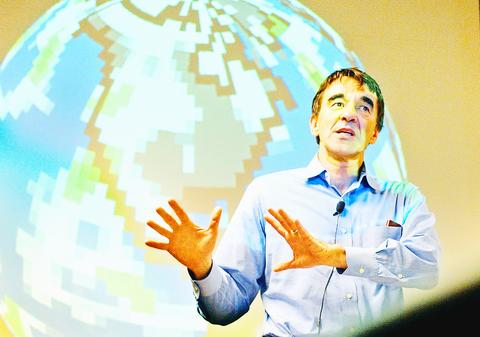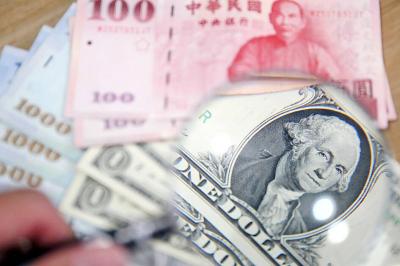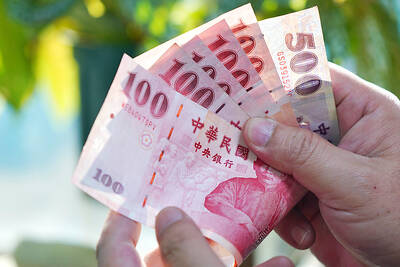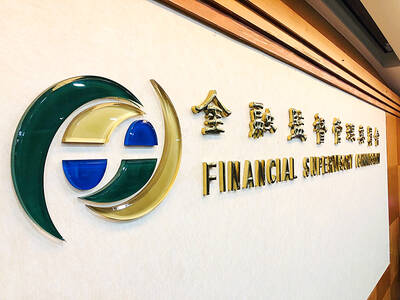US supercomputers have been the world's most powerful since the first high-performance machines analyzed virtual nuclear blasts, climate change and the makeup of the universe.
Now, one built in Japan with an "old" design runs five times faster than the previous record holder, a machine that simulates nuclear tests at Lawrence Livermore National Laboratory.

PHOTO: AP
Japan's Earth Simulator supercomputer hasn't quite rattled the US like the Soviet Union's launch of Sputnik in 1957. But it does highlight some drawbacks of recent US machines -- and it has made more than a few scientists envious.
"This machine is powerful enough that a researcher who uses it can do in one day what it takes a researcher in the US to do in one month," said Jack Dongarra, a University of Tennessee professor who tracks the world's 500 speediest computers.
More than national pride is at issue. Certain research is better suited to machines like the Earth Simulator, whose design was abandoned by most US manufacturers in favor of one that melds better with the rest of their computing businesses.
Supercomputers are built with thousands of processors that work in tandem to analyze the most complex issues -- including nuclear test simulations, aircraft designs, drug creation and others -- for governments, research centers and corporations.
Livermore's ASCI White supercomputer, like most recent US-built machines, used off-the-shelf processors rather than custom parts specifically geared for high-performance scientific jobs.
The trend took off in the 1990s, as such processors grew increasingly powerful, making it difficult to justify the cost of developing chips just for the small scientific supercomputer market.
Now, supercomputers like ASCI White use the same chips -- but thousands more of them -- as do servers sold to businesses.
Such machines now make up nearly 92 percent of the top 500 supercomputers worldwide. In 1993, they made up only about 27 percent.
But some say the move away from custom processors places business concerns ahead of scientific needs.
"The arguments are all based on strange economic theories -- none of them are based on technical grounds," said Burton Smith, chief scientist at Cray Inc, which still sells custom supercomputers.
NEC-built Earth Simulator, which will be used in climate and earthquake studies, is faster than all 15 of the biggest supercomputers in the US combined, Dongarra said.
It performs 35.9 trillion calculations a second with 5,104 processors. ASCI White, by contrast, performs 7.2 trillion calculations a second with its 8,192 processors.
"US scientists want to use it," said Kiyoshi Otsuka, leader of the Earth Simulator's research exchange group in Yokohama, Japan.
The high-performance title isn't expected to stay in Japan forever. IBM, which built ASCI White, Hewlett-Packard Co and other US supercomputer makers say they are working on even more powerful machines.
"We could do that in a heartbeat and we could do that for a lot less money," said Peter Ungaro, vice president of high performance computing at IBM, which sells supercomputers to foreign nuclear governments, research centers and corporations.
Officials at the Livermore Lab say their machine and others like it offer better price performance than those designed like the Japanese supercomputer. Earth Simulator cost about US$350 million, compared with ASCI White's US$110 million.
"For global climate, [Earth Simulator] is a great advance," said David Nowak, the ASCI program leader at Livermore. "It's just a very expensive machine."
But supercomputers built with off-the-shelf parts can be more expensive in the long run, said Guy Robinson, research liaison at the Arctic Region Supercomputing Center, where scientists study everything from climate change to how galaxies form.
Price isn't the only factor, however. Scientists say certain research problems work better or are easier to program on one supercomputer type over the other.
Custom supercomputers, for instance, have bigger data pipes, known as memory bandwidth, which is critical in climate modeling and some nuclear research.
That can be a drawback for off-the-shelf processors.
"In one sense, we have a tiny straw for data," Dongarra said. "And we have the processor, which would like a fire hose of data to come at it."
But off-the-shelf machines work best on data analysis such as in genetic research. It's a case of finding the best fit for the research -- and budget, said Fran Berman, director of the San Diego Supercomputer Center.
"From a political and financial perspective, we're not in an environment where we could build all these different kinds of tools with equal emphasis," she said.
J. David Neelin, atmospheric scientist at the University of California, Los Angeles, said computing is ultimately just another tool, like a laptop is for a student assigned to write a paper.
"Are they going to get that essay out any faster or is it going to be any better? Well, their spell checker is going to run a little faster," he said. "In the end, it's the thought that goes into it that really makes the essay."

The US dollar was trading at NT$29.7 at 10am today on the Taipei Foreign Exchange, as the New Taiwan dollar gained NT$1.364 from the previous close last week. The NT dollar continued to rise today, after surging 3.07 percent on Friday. After opening at NT$30.91, the NT dollar gained more than NT$1 in just 15 minutes, briefly passing the NT$30 mark. Before the US Department of the Treasury's semi-annual currency report came out, expectations that the NT dollar would keep rising were already building. The NT dollar on Friday closed at NT$31.064, up by NT$0.953 — a 3.07 percent single-day gain. Today,

‘SHORT TERM’: The local currency would likely remain strong in the near term, driven by anticipated US trade pressure, capital inflows and expectations of a US Fed rate cut The US dollar is expected to fall below NT$30 in the near term, as traders anticipate increased pressure from Washington for Taiwan to allow the New Taiwan dollar to appreciate, Cathay United Bank (國泰世華銀行) chief economist Lin Chi-chao (林啟超) said. Following a sharp drop in the greenback against the NT dollar on Friday, Lin told the Central News Agency that the local currency is likely to remain strong in the short term, driven in part by market psychology surrounding anticipated US policy pressure. On Friday, the US dollar fell NT$0.953, or 3.07 percent, closing at NT$31.064 — its lowest level since Jan.

The New Taiwan dollar and Taiwanese stocks surged on signs that trade tensions between the world’s top two economies might start easing and as US tech earnings boosted the outlook of the nation’s semiconductor exports. The NT dollar strengthened as much as 3.8 percent versus the US dollar to 30.815, the biggest intraday gain since January 2011, closing at NT$31.064. The benchmark TAIEX jumped 2.73 percent to outperform the region’s equity gauges. Outlook for global trade improved after China said it is assessing possible trade talks with the US, providing a boost for the nation’s currency and shares. As the NT dollar

The Financial Supervisory Commission (FSC) yesterday met with some of the nation’s largest insurance companies as a skyrocketing New Taiwan dollar piles pressure on their hundreds of billions of dollars in US bond investments. The commission has asked some life insurance firms, among the biggest Asian holders of US debt, to discuss how the rapidly strengthening NT dollar has impacted their operations, people familiar with the matter said. The meeting took place as the NT dollar jumped as much as 5 percent yesterday, its biggest intraday gain in more than three decades. The local currency surged as exporters rushed to